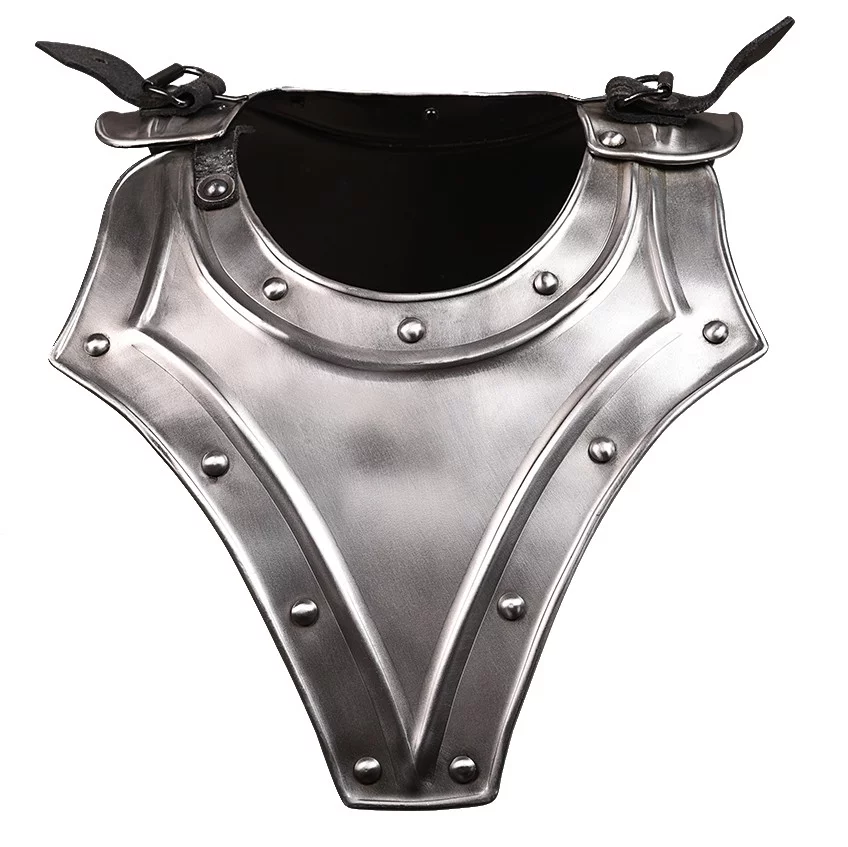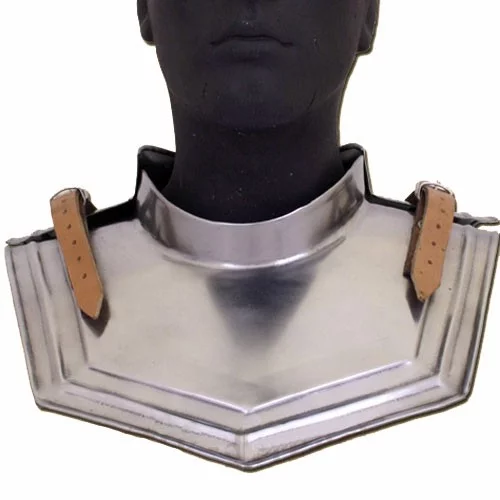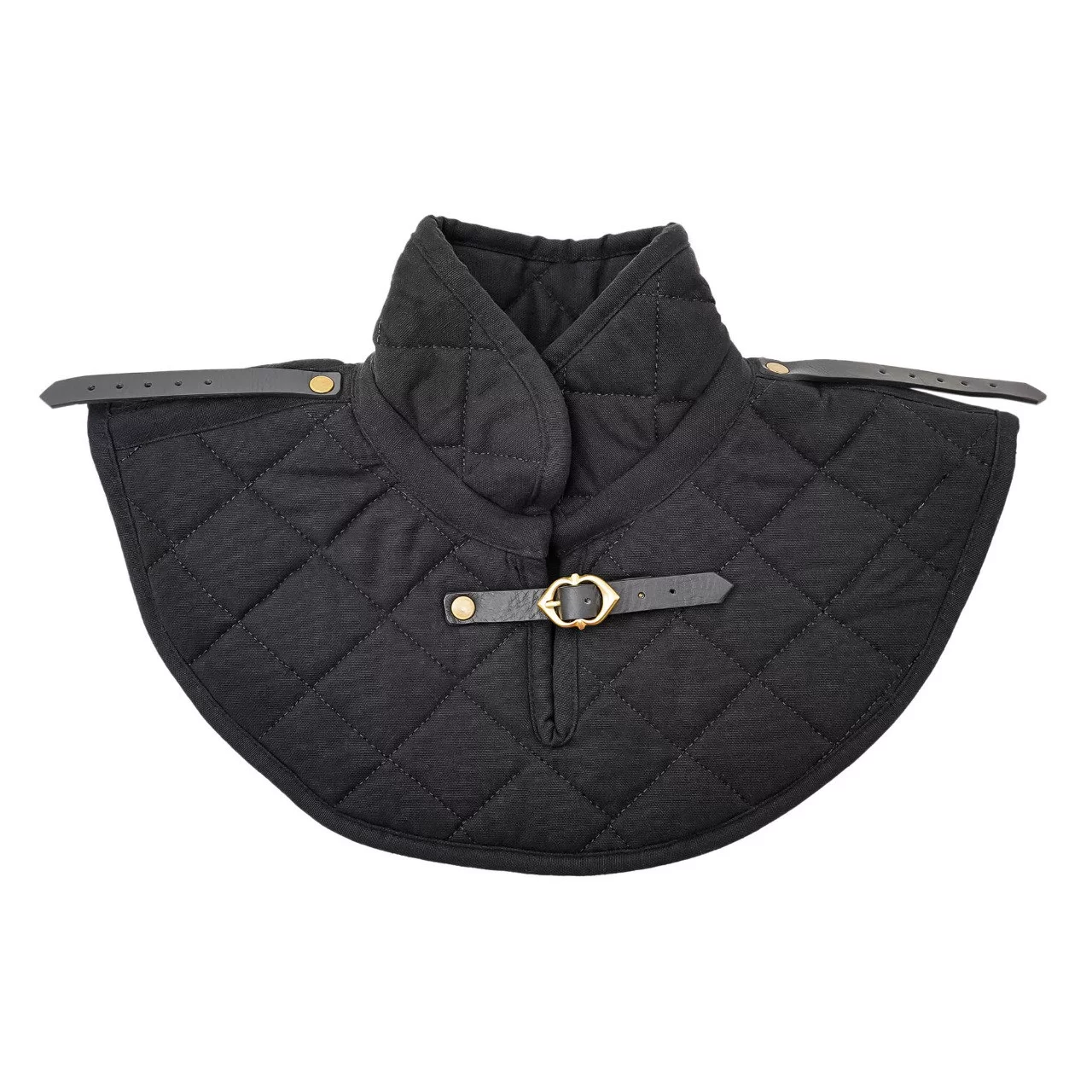What is a Gorjal or Gorget?
The gorjal, also known as gorget, is a key piece of medieval armor designed to offer protection to the neck and upper chest of the warrior. Its importance in combat is undeniable, as it plays a critical role in defense during battles. Below are the most relevant aspects of this fundamental piece of war attire from the era:
Main Functions
- Neck Protection: Acts as the first line of defense for this vulnerable area, preventing cuts and thrusts.
- Structural Support: Provides a solid foundation for other pieces of armor, such as the helmet, increasing the warrior's stability and protection.
- Integration with Armor: Attaches to the breastplate and backplate, creating a protective wrap that ensures complete upper torso defense.
Main Characteristics
- Location: Positioned at the top of the chest, covering the back of the neck and shoulders.
- Structure: Generally consisted of a neck made of iron divided into two articulated pieces, designed for easy adjustment.
- Materials: Typically made of metal, such as iron or steel, which provided the necessary robustness to withstand impacts.
Evolution and Use
- It was one of the first pieces to be worn when dressing in armor.
- In some cases, a high gorjal could replace the collar, which specifically protected the front of the neck.
- Its design evolved to improve both mobility and protection, in response to changing combat tactics.

Fit and Comfort
The fit of the gorjal was essential for its effectiveness in combat. It was achieved through various methods:
- Articulated Design: Thanks to its construction in two pieces, the gorjal could be comfortably adjusted around the warrior's neck.
- Closure System: It usually closed with buckles and straps, allowing for personalized adjustment.
- Integration with Other Pieces: Joined to the breastplate and backplate, its design ensured it stayed in place during combat.
- Customized Fit: Armorers made gorjals to measure, ensuring an optimal fit for each warrior.
- Inner Padding: Often included leather or fabric padding for improved comfort.
- Ergonomic Shape: Its design follows the anatomy of the neck and shoulders for a more precise fit.

Critical Combat Situations
The gorjal became an indispensable piece in various battle situations:
- Protection Against Neck Attacks: Defends a vital area from cuts and thrusts.
- Defense Against Polearm Weapons: Helps deflect impacts in confrontations against spearmen.
- Close-Combat: Provides additional protection against opportunistic attacks.
- Cavalry Charges: Protects the rider during lateral and frontal impacts in initial clashes.
- Defense Against Projectiles: Although not its primary function, it can help reduce the impact of arrows.
- Support for the Helmet: Facilitates the weight distribution of the helmet, enhancing comfort in prolonged combats.
- Protection Against Rising Blows: Useful for safeguarding the neck and chin against upward attacks.

The gorjal, when integrated with other pieces of armor, formed a robust and effective defense system, crucial for the warrior's survival on the battlefield. Its design and functionality have left a significant mark in the history of personal protection in combat.
















